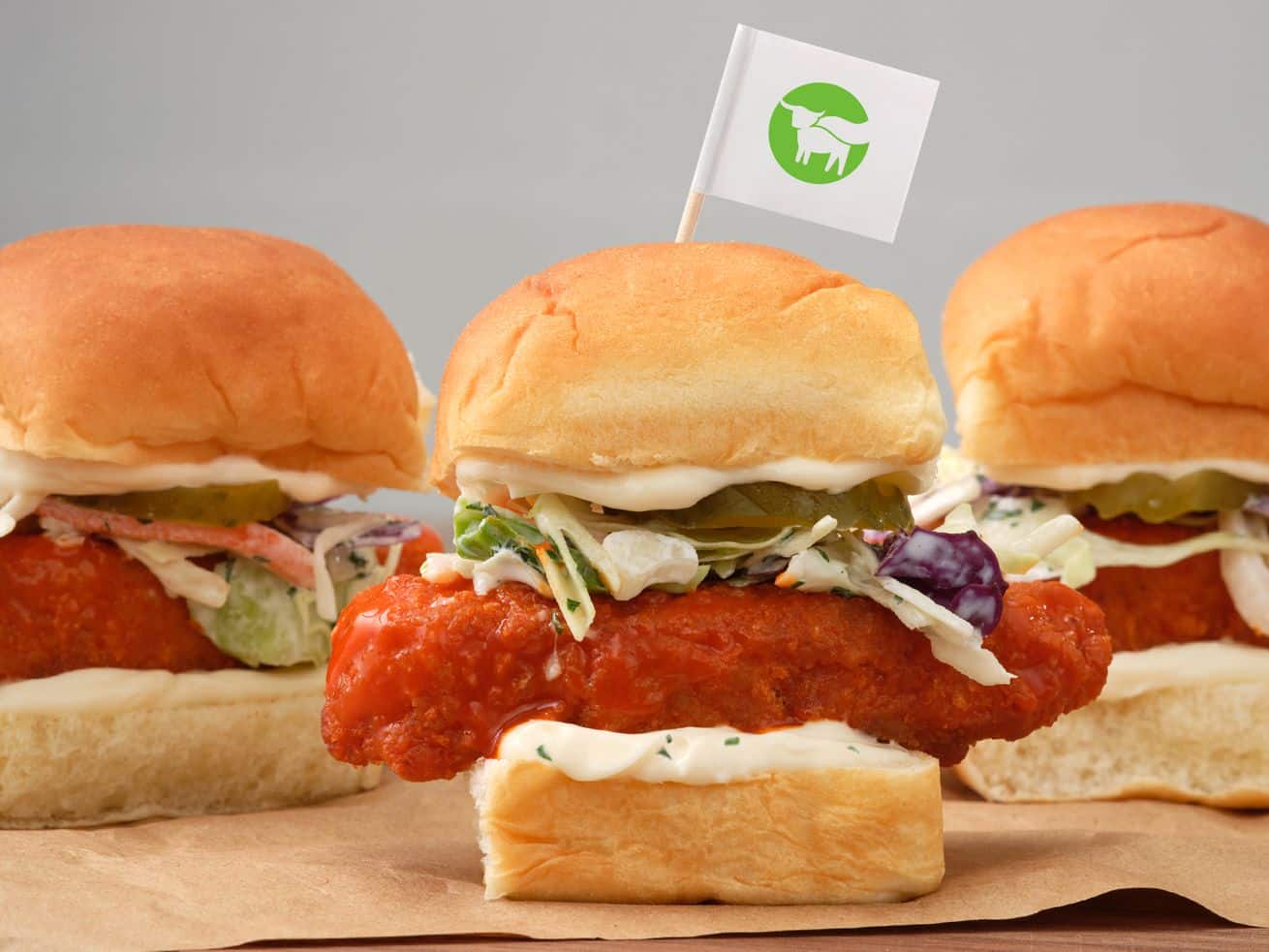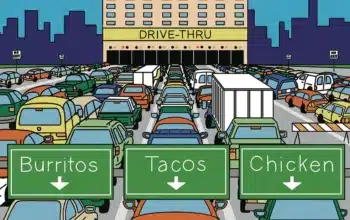The brand-new Beyond Chicken tenders taste almost identical to the real thing.
If you’ve ever had a Beyond Burger or Impossible Burger, you know that plant-based food companies have figured out how to make fake beef that tastes pretty beefy. Their success is reflected in the fact that many foodies now consider their products not only tolerable but trendy.
Yet when it comes to chicken, plant-based meat companies have really struggled to make a convincing substitute. That’s largely because replicating the structure of chicken muscle — which has a fibrous quality, with strands that pull apart — is much harder than creating a ground meat lookalike. Beyond Meat has tried to mimic chicken in the past, releasing chicken strips back in 2012. But reviews were mixed, and the company pulled the product a few years later.
Now, Beyond Meat is ready to try again with a new product: Beyond Chicken tenders. Hundreds of restaurants across the US — mostly small regional chains — launched the product on their menus starting July 8 (you can go to this locator to see if it’s available near you). And this time, the company may have finally cracked the code.
Their team of 200 scientists examined different plant candidates — soy beans, peas, mung beans, fava beans, and so on — to figure out which would be the best plant to supply the protein in their tenders. They found that when they isolated protein from fava beans, they could use heating, cooling, and pressure to reshape it into a structure that mimics chicken muscle.
Fava beans were also able to mimic the taste and even smell of chicken. In the lab, the scientists used an “e-nose” — an electronic nose that sniffs out the aroma molecules that come out of real chicken and then sniffs out the aroma molecules that come from various plants, to find the right match.
The result: new faux-chicken tenders that are nearly indistinguishable from the real thing.
The breaded tenders work well on their own or as part of a sandwich or wrap, which is how some restaurants are serving them. (You won’t be able to find the tenders in grocery stores yet, but Beyond says it’ll soon expand into hotels, college campuses, and stadiums.)
And the taste is only one of the benefits. There are health benefits to be reaped, too: Beyond Chicken tenders have 40 percent less saturated fat than a typical restaurant tender, they have no cholesterol, and they’re made with no antibiotics. (Though, like regular chicken tenders, Beyond’s are high in sodium.)
Plus, when you opt for chickenless chicken, you know that you’re reducing the demand for chickens raised in horrible conditions on factory farms. Those giant, industrialized farms also damage the environment and ratchet up the risk of emerging pandemics and antibiotic resistance — so you can feel good knowing you’re not supporting that system.
“We call it hedonistic altruism,” Ethan Brown, the founder and CEO of Beyond Meat, told me. “If we can provide a delicious sensory experience for the consumer and they can also feel really great about what they’re doing for the Earth — it’s a win.”
/cdn.vox-cdn.com/uploads/chorus_asset/file/22706831/Beyond_Chicken_Tenders.jpg) Courtesy of Beyond Meat
Courtesy of Beyond MeatOkay, but does it actually taste like real chicken?
Although the tenders are mainly made from fava beans, I honestly wouldn’t have suspected that they come from a plant if I hadn’t known that before I took a bite. They tasted almost identical to real chicken, and the breading on them made them look convincingly chickenesque.
When I stripped off the breading to see what was under the hood, I found that the texture inside didn’t 100 percent match chicken (it was a bit denser), though I’d say it was 90 percent of the way there. It replicated the texture of traditional chicken nuggets a bit better than the top competitors in the freezer aisle, like Gardein’s vegan tenders.
I actually tried pulling the Beyond Chicken tender apart, and it did have a bit of fibrousness reminiscent of the strands in chicken muscle. Again, not 100 percent true to life, but I only noticed the difference because I was surgically dissecting my lunch. Normally, diners don’t do that — so, I thought, who even cares about these tiny differences?
I found myself questioning the whole premise that a faux-chicken product needs to be exactly like chicken. If I have something that’s 90 percent similar to this thing I like to eat, and it’s much better for animals and the environment and human health, why wouldn’t I go for that? Why should I be so fanatically fixated on its metaphysical chickenness? I just care that it tastes good.
But I know that some people do care about eating something that tastes exactly like chicken, so I took Beyond Chicken tenders to the toughest food critic I know: my 87-year-old grandmother. She’s been cooking incredible chicken dishes for decades, and I wanted to see if she’d sniff out the difference if I didn’t tell her that what she was being served was not real chicken. So I simply told her I’d brought us a treat to share. After taking a few bites, she said it tasted “very good.”
Then I revealed to her that this was not real chicken; it was made from plants.
She stared at me for a second. Then she said, “I don’t mind, as long as it tastes like chicken. And it does! It’s a bit heavier, but if you hadn’t said anything, I wouldn’t have noticed.”
Is this the future of chicken consumption?
So far, Beyond Chicken tenders are only available in about 400 restaurant locations. But if more restaurants add the tenders to their menus — and if KFC, after evaluating its 2020 Beyond Fried Chicken trial run, moves forward with a national rollout — it could help us step away from our deeply problematic current system of raising real chickens.
About 99 percent of all chickens we eat come from factory farms. These aren’t the idyllic, pastoral farms we’re taught to picture as children, with birds free to wander around in the greenery. Instead, chickens are raised in gigantic, noisy, overcrowded warehouses filled with ammonia fumes. Due to genetic selection for larger size, they grow so fast that their legs can’t support their weight. After six weeks of misery, they’re killed.
And as my colleague Kelsey Piper has explained, each year the average American eats about 23 chickens, compared to just over one-tenth of one cow. That’s because chickens are much smaller, producing only a few pounds of meat. Chicken has also become extremely popular; Americans eat twice as much of it now as they did in the 1970s.
All this bothers Brown, the Beyond Meat CEO, a lot.
“Animal welfare is a really important consideration,” he said. “In terms of just the number of sentient beings — the sheer number of captive beings — chickens are up there. It’s a different thing than beef, for sure.”
But plant-based companies are not yet able to mimic chicken in all its forms. Making a breaded tender is one thing — the breading can act as camouflage. Creating a convincing chicken breast is a whole other dream, and Brown suggested we shouldn’t expect it to come true anytime soon.
“We have some projects that we consider a holy grail, and chicken breast is one of those. It’s very distinct-looking,” he said. “That’s going to take time.”
Meanwhile, the chicken tenders are a good start.
Author: Sigal Samuel
Read More



